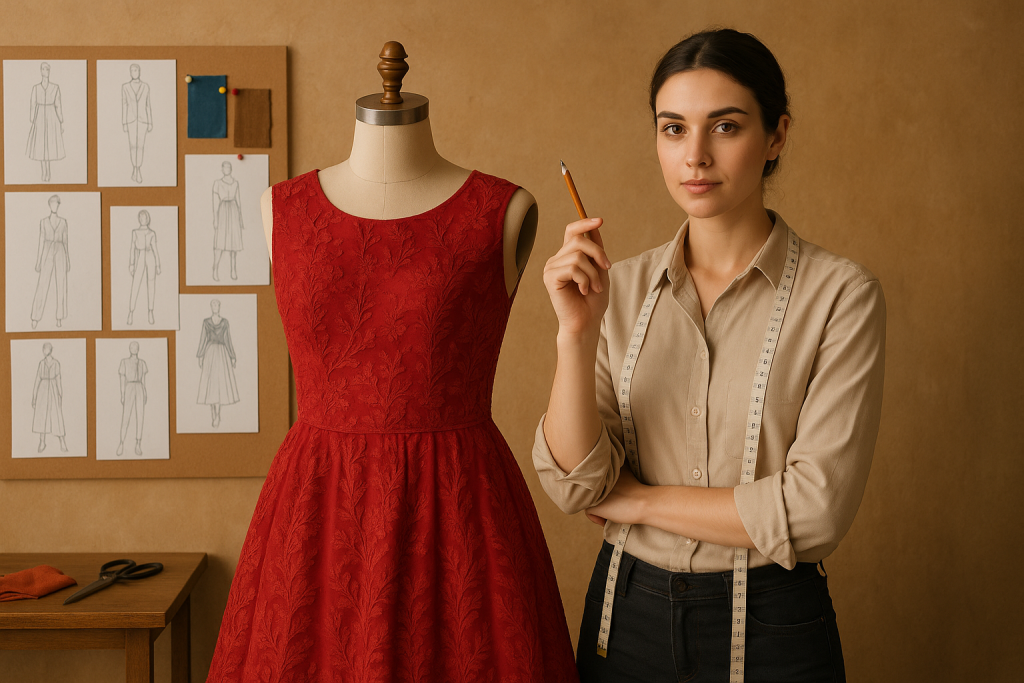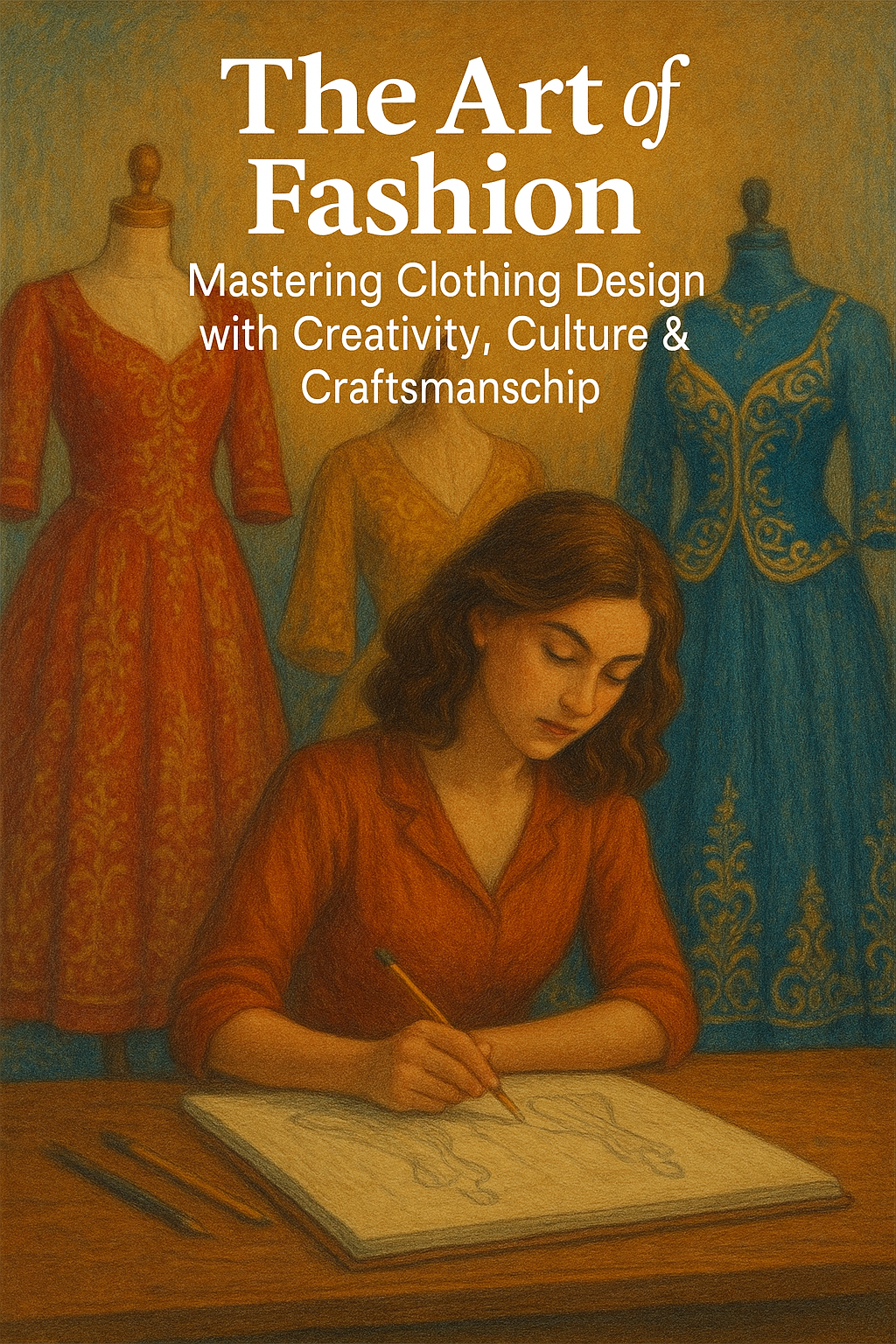The Art of Fashion: Mastering Clothing Design with Creativity, Culture & Craftsmanship
In today’s ever-evolving fashion landscape, clothing design is no longer just about cutting fabric and following trends. It’s an artistic expression—a fusion of culture, personality, innovation, and craftsmanship. From haute couture runways in Paris to handcrafted garments in Indian villages, clothing design speaks the language of identity, purpose, and passion.

What is Clothing Design?
Clothing design is the creative process of conceptualizing and producing apparel that is functional, visually appealing, and reflective of the wearer’s identity. It involves sketching ideas, selecting materials, pattern making, tailoring, and finally, bringing garments to life.
Whether you’re designing for everyday streetwear or luxury fashion houses, the essence of great design lies in the balance between imagination and functionality.
The Core Pillars of Clothing Design
1. Creativity & Innovation
At its heart, fashion is about storytelling. Designers draw inspiration from nature, art, music, architecture, or even current events. The ability to think outside the box transforms simple garments into walking masterpieces.
2. Fabric Selection & Texture
The type of fabric can make or break a design. Silk exudes elegance, cotton breathes comfort, denim adds ruggedness, and synthetics allow for futuristic flair. Great designers know how to pair texture with silhouette to enhance wearability and visual impact.
3. Color Theory & Coordination
Colors set the tone of a garment. Understanding color theory helps designers evoke certain emotions—bold reds for confidence, soft pastels for elegance, or neutral tones for versatility. The harmony between color palettes plays a vital role in the overall appeal.
4. Cultural Significance
Clothing often carries deep cultural meaning. Indian sarees, Japanese kimonos, African prints, or Scottish kilts—each tells a unique story rooted in tradition. Today, many designers blend cultural elements into modern designs, creating pieces that are both contemporary and respectful of heritage.
The Process of Designing Clothes
Here’s a step-by-step look at how designers breathe life into their creations:
- Research & Mood Boarding
Collect inspiration, identify trends, and understand your target audience. Pinterest, runway shows, and street style photography are great starting points. - Sketching Ideas
Designers sketch their ideas either by hand or digitally. These sketches become the blueprint of the final garment. - Material Sourcing
The right fabric is selected based on drape, texture, and compatibility with the design. - Pattern Making
A pattern is the template used to cut the fabric. It ensures accuracy and fit. - Sewing & Sampling
A prototype is created to test the fit and style. Adjustments are made before the final version is crafted. - Finishing Touches
Embroidery, embellishments, linings, or fabric treatments are added to enhance the garment.
Trends Shaping the Future of Clothing Design
Sustainable Fashion
With growing awareness about environmental issues, designers are turning to eco-friendly materials, zero-waste production methods, and upcycled clothing to create a more sustainable future.
Technology in Fashion
From 3D printing and virtual fashion shows to AI-based design tools, technology is redefining how we create and experience fashion.
Gender-Neutral Apparel
Fashion is moving beyond traditional binaries. Gender-fluid clothing celebrates individuality and freedom of expression.
Customized Designs
Consumers now crave personalization. Custom-fit and made-to-order pieces are becoming mainstream, thanks to digital tools and direct-to-consumer models.
Tips for Aspiring Clothing Designers
- Learn the Basics:
Master the fundamentals of fashion drawing, fabric science, and garment construction. - Build a Portfolio:
Showcase your best work, including sketches, mood boards, and finished designs. - Stay Inspired:
Travel, observe people, visit museums, and consume art. The world is your inspiration board. - Embrace Criticism:
Feedback helps you grow. Learn to listen, adapt, and evolve your style. - Network Actively:
Attend fashion events, connect with other designers, and keep learning from the industry’s best.
Clothing design is more than a career—it’s a calling. It’s a realm where artistry meets function, and emotion meets aesthetics. Whether you aim to start your own label, design for a brand, or simply explore your creativity, remember this: Fashion is not just about dressing bodies, it’s about dressing dreams.














Post Comment